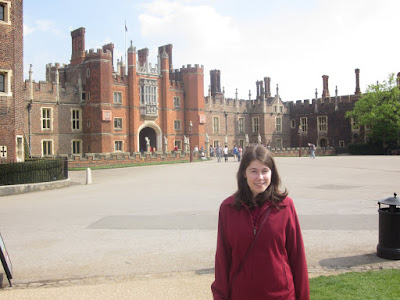Returning to Spain was a long ride. After a subway commute to the train station, a train to the airport, a flight to Malaga, and a bus to my hostel, I arrived at my destination. I wanted to spend a lazy day in Malaga to visit its Picasso Museum before returning to Sevilla. On my flight I was accompanied by many Brits on Easter vacation. But, they should have stayed in London. The weather in Malaga was awful. Nearly of Spain has been experiencing a downpour of rain, while London, two weeks of sun. The world upside down I suppose. It not did matter much to me; I was not in Malaga for the beach, rather the museums.
When I arrived at my hostel, everyone was crowed around the television for the "Copa del Rey" final. Barcelona, known as the best team in the world, fell 0-1 to its formidable arch-rival Real Madrid. Lots of screaming in the hostel, but I still slept well. I was put in a room of bunk beds with five french girls (it was technically a mixed room).
On Thursday, I started my lazy day with the Picasso Museum. After my fantastic Picasso Museum experience in Barcelona, I wanted to learn more about the eccentric Spanish artist. I found myself in a screening room for an hour and half watching a Picasso documentary. And that was just one part of the exhibit. The paintings collection did not quite measure up to Barcelona, but Malaga still claims some rights to Picasso. He was born here. I learned about Picasso's process most of all: one painting inspires something within him that leads to the next painting. Had he not experimented, he would not have discovered. I liked the most one painting extracted from Picasso's series of portraits of his second wife, Jacqueline Roque. The painting seeks to capture her mood with color and line (see below).
Jacqueline Sentada (seated)
(from: http://www2.museopicassomalaga.org/)
After grabbing a tapas snack, I continued to Malaga's newest art musuem: Museo de arte Colección Carmen-Thyssen. It features the best modern Spanish painters from a private collector. Now that I have seen many parts of Spain, I could recognize and appreciate many of the featured subjects and scenes. Many featured Sevilla, its historic center, Semana Santa, and Feria. Others featured more of southern Spain, Basque Country, and even Venice. I was proud to be the only American in this museum.
Inside the Thyssen
(from: http://es.globedia.com/manana-inaugura-museo-carmen-thyssen-malaga)
I spent the next hour walking around the ancient Roman ruins of Malaga, the beach site promenade, and the Moorish fortress. I caught the train back to Sevilla at about 5 pm and was back in Sevilla two hours later. Rain and rest would be the story for the next few days.
To see photos of this day, see "Malaga 4-21" at https://picasaweb.google.com/bradleywilliams39


































